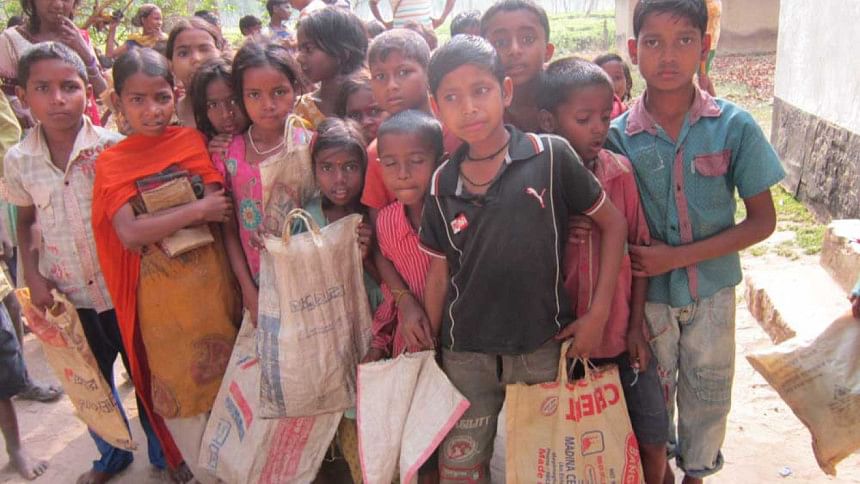Tea garden languages: A neglected issue in national discourse

The languages spoken by the workers in Bangladesh's tea gardens remain largely beyond the scope of government policies and initiatives. While education is provided in five languages, the approximately 500,000 tea garden residents speak around 15 languages, which are largely ignored.
Even the endangered languages in these areas are not included in official lists of endangered languages.
In 2012, an initiative was launched to create pre-primary textbooks in five local languages, marking the first phase of an effort to promote education in mother tongues.
This phase focused on three languages from the hilly regions -- Chakma, Marma, and Tripura -- and two from the plains -- Sadri and Garo. By 2014, textbooks in these languages were distributed to pre-primary children, but there was no consideration for the languages spoken in the tea gardens.
According to the Society for Environment and Human Development (SEHD), Bangladesh has 158 tea gardens, excluding those in Panchagarh. The majority of tea workers -- over 138,000 people -- are non-Bangalee.
These workers were brought from various parts of India, such as Bihar, Madhya Pradesh, West Bengal, and others, during British colonial rule to labour in the tea gardens of the Sylhet region.
Over time, these workers have faced deprivation, exploitation, and alienation, leading to their marginalised status in Bangladesh.
The unique aspect of these communities is their shared identity as tea workers, shaped by their occupation and separation from the Bangalee majority. However, within this group, there exists a rich diversity, with up to 80 distinct ethnic and caste identities, as mapped by SEHD.
These communities speak a variety of languages, including Santali, Munda, Rajbongshi, Oraon, Mahali, Sadri, Bhojpuri, Nepali, and others.
According to the Summer Institute of Linguistics (SIL), many of these languages are endangered. SIL's country director, Cornelius Tudu, said the socio-economic struggles of these communities have led to the erosion of their cultural identities and languages.
Their impoverished conditions have created a disinterest in preserving their native tongues or passing them down to future generations.
SIL has identified 15 endangered languages within the tea garden population, including Kanda, Ganju, Banai, Baraik, Bhumij, and others.
Many of these languages, such as Sadri, have no written script, and oral use is diminishing. The languages spoken by other communities like the Teli, Turi, and Mushahar are also on the decline.
Communities such as the Malo, Rajwar, and Khadia speak languages that are at risk of disappearing entirely. The Bagdi, Hudi, and Bhumi languages have already ceased to be spoken orally, and no written records exist of these languages.
Provash Chandra Singha, deputy director (additional duty) of the Monipuri Lolitkola Academy, said language work is the responsibility of the government and that training is arranged only occasionally.
Rambhajan Kairi, former general secretary of the Bangladesh Tea Workers Union, said despite the presence of 12 to 15 distinct languages in tea gardens, they are largely ignored in national discussions.
He pointed out that language issues for indigenous people are often addressed in other regions, such as Chattogram, Mymensingh, and North Bengal, but the tea gardens are forgotten.
Despite the passage of 59 years since independence, the plight of tea garden workers remains largely unaddressed.
Kairi, who served as vice chairman of Kamalganj Upazila for five years, also highlighted the lack of attention from cultural organisations, such as the Manipuri Lalitkola Academy, in preserving the languages of tea gardens.
There is a clear need for the government and cultural institutions to recognise and take action to preserve the languages, cultures, and identities of these marginalised communities, Kairi said.
Mohammed Nure Alam Siddiki, additional director (Language, Research and Planning) of the International Mother Language Institute, said, "I don't know anything about this. You can talk to the director about this."

 For all latest news, follow The Daily Star's Google News channel.
For all latest news, follow The Daily Star's Google News channel. 



Comments